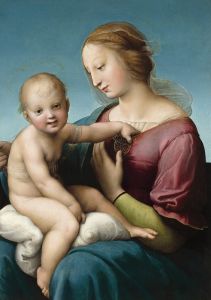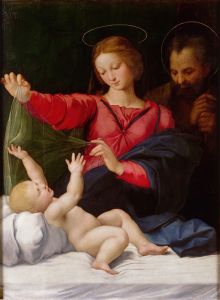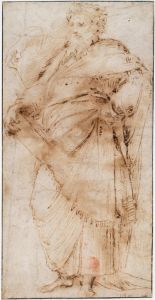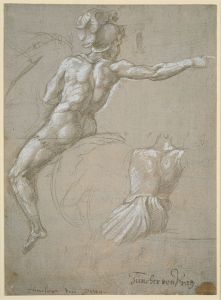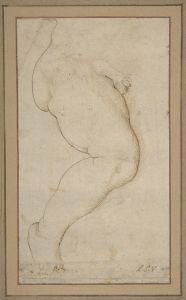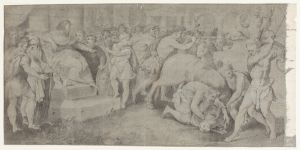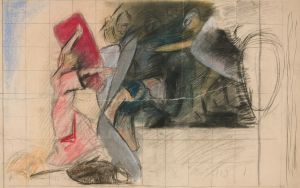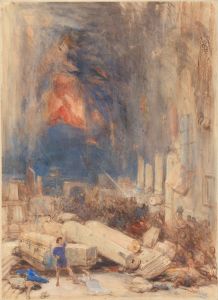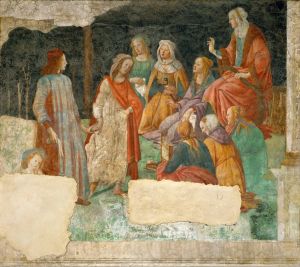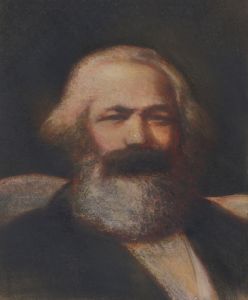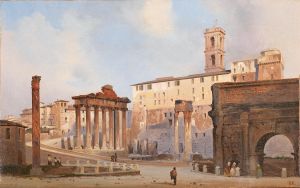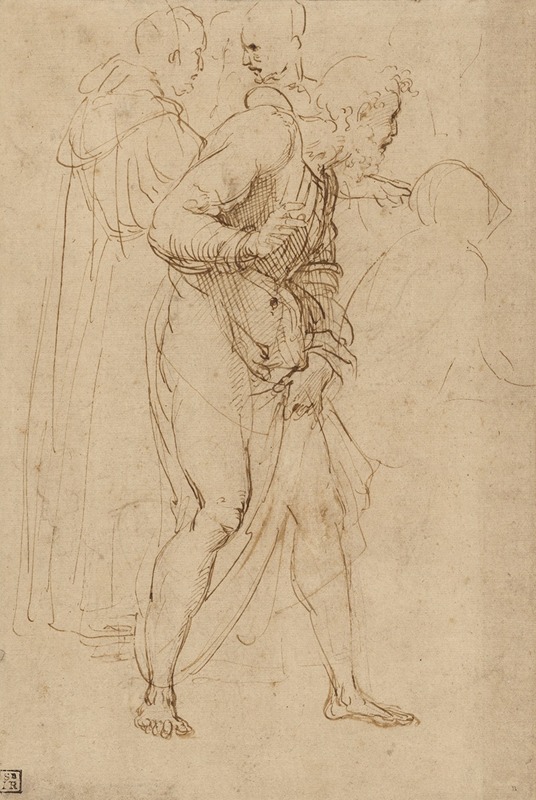
Studies for the Disputa
A hand-painted replica of Raphael’s masterpiece Studies for the Disputa, meticulously crafted by professional artists to capture the true essence of the original. Each piece is created with museum-quality canvas and rare mineral pigments, carefully painted by experienced artists with delicate brushstrokes and rich, layered colors to perfectly recreate the texture of the original artwork. Unlike machine-printed reproductions, this hand-painted version brings the painting to life, infused with the artist’s emotions and skill in every stroke. Whether for personal collection or home decoration, it instantly elevates the artistic atmosphere of any space.
"Studies for the Disputa" by Raphael refers to a series of preparatory sketches and drawings created by the renowned Italian Renaissance artist Raphael (Raffaello Sanzio da Urbino) for his fresco "The Disputation of the Holy Sacrament," commonly known as "The Disputa." This fresco is part of Raphael's commission to decorate the Stanza della Segnatura, one of the Raphael Rooms in the Vatican Palace, which was executed between 1509 and 1511.
"The Disputa" is one of Raphael's most celebrated works and forms part of a larger program of frescoes that also includes "The School of Athens." The fresco depicts a theological debate concerning the mystery of the Eucharist, with a celestial and terrestrial scene that includes a host of religious figures, theologians, and philosophers. The upper part of the fresco shows a heavenly vision with Christ, the Virgin Mary, John the Baptist, and various saints, while the lower part features a gathering of Church Fathers, theologians, and other figures engaged in discussion.
Raphael's preparatory studies for "The Disputa" are crucial for understanding his creative process and the development of the composition. These studies include sketches of individual figures, group arrangements, and compositional layouts. They reveal Raphael's meticulous approach to composition, his attention to detail, and his ability to convey complex theological themes through art.
The studies are executed in various media, including pen and ink, chalk, and metalpoint, and they demonstrate Raphael's skill in capturing human anatomy, expression, and movement. These preparatory works are housed in several collections, including the Ashmolean Museum in Oxford and the Uffizi Gallery in Florence, among others. They provide insight into Raphael's working methods and his evolution as an artist during the High Renaissance.
Raphael's ability to synthesize classical ideals with Christian themes is evident in these studies. His work on "The Disputa" and its preparatory drawings exemplifies the harmony and balance that characterize Renaissance art. The studies also highlight Raphael's engagement with the intellectual currents of his time, reflecting the humanist ideals that were prevalent in the cultural milieu of the Renaissance.
The significance of these studies extends beyond their role in the creation of "The Disputa." They are valued as works of art in their own right and are studied for their contribution to the understanding of Renaissance art and Raphael's oeuvre. The drawings offer a glimpse into the artist's workshop and the collaborative nature of artistic production during this period, as Raphael often worked with a team of assistants.
In summary, "Studies for the Disputa" by Raphael are an essential component of the artist's preparatory work for one of his most important frescoes. They illustrate his artistic process, his mastery of form and composition, and his ability to convey complex theological concepts through visual art. These studies remain a testament to Raphael's enduring legacy as one of the greatest artists of the Renaissance.






